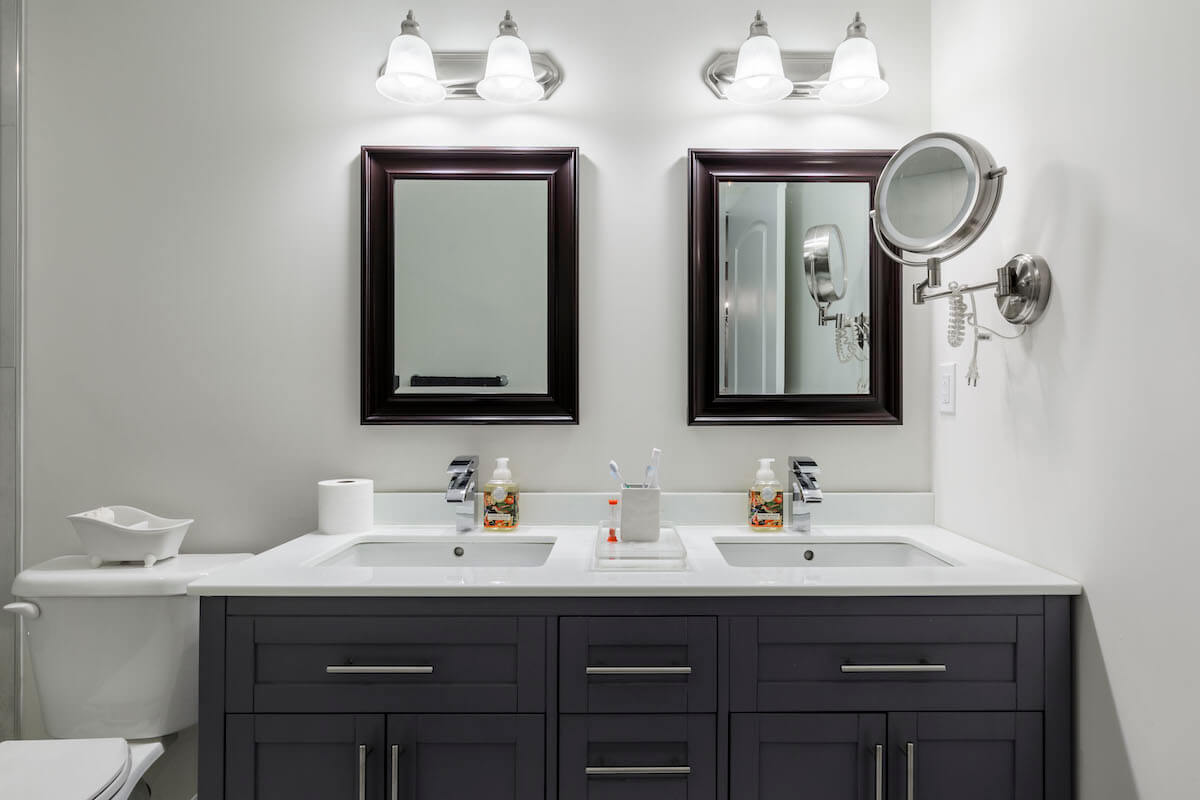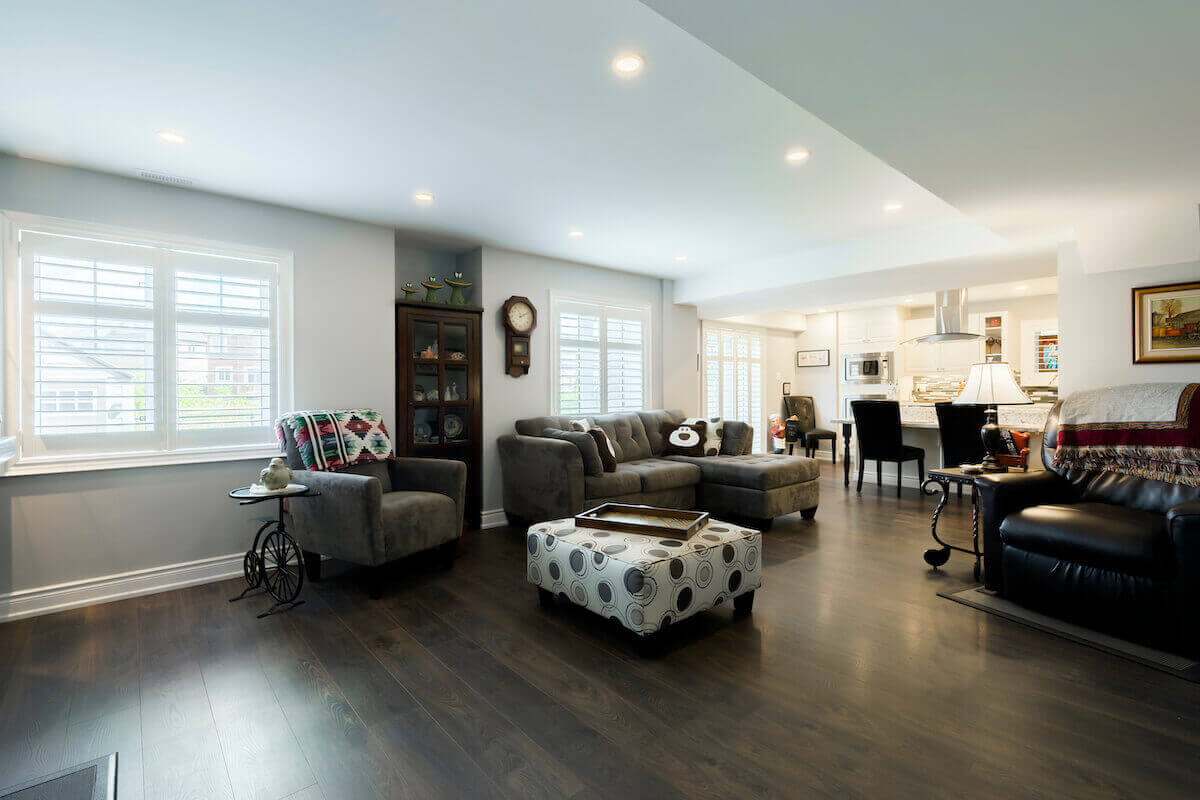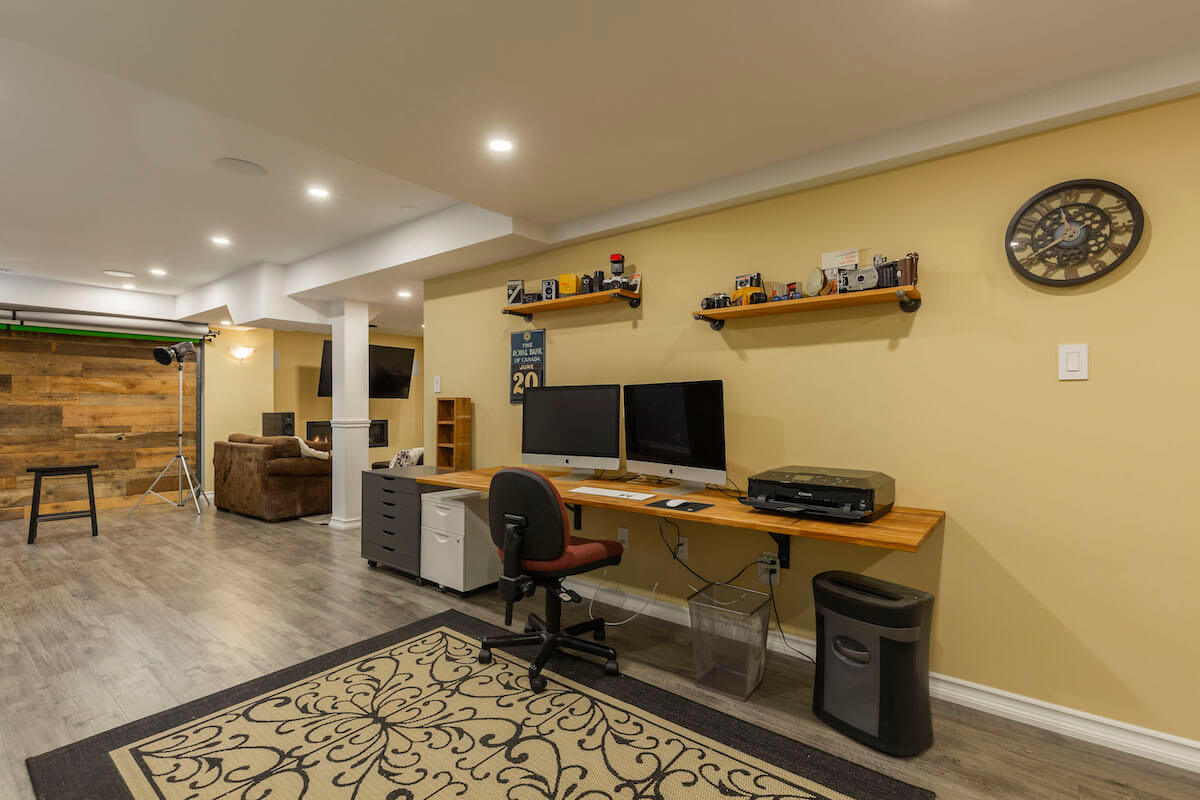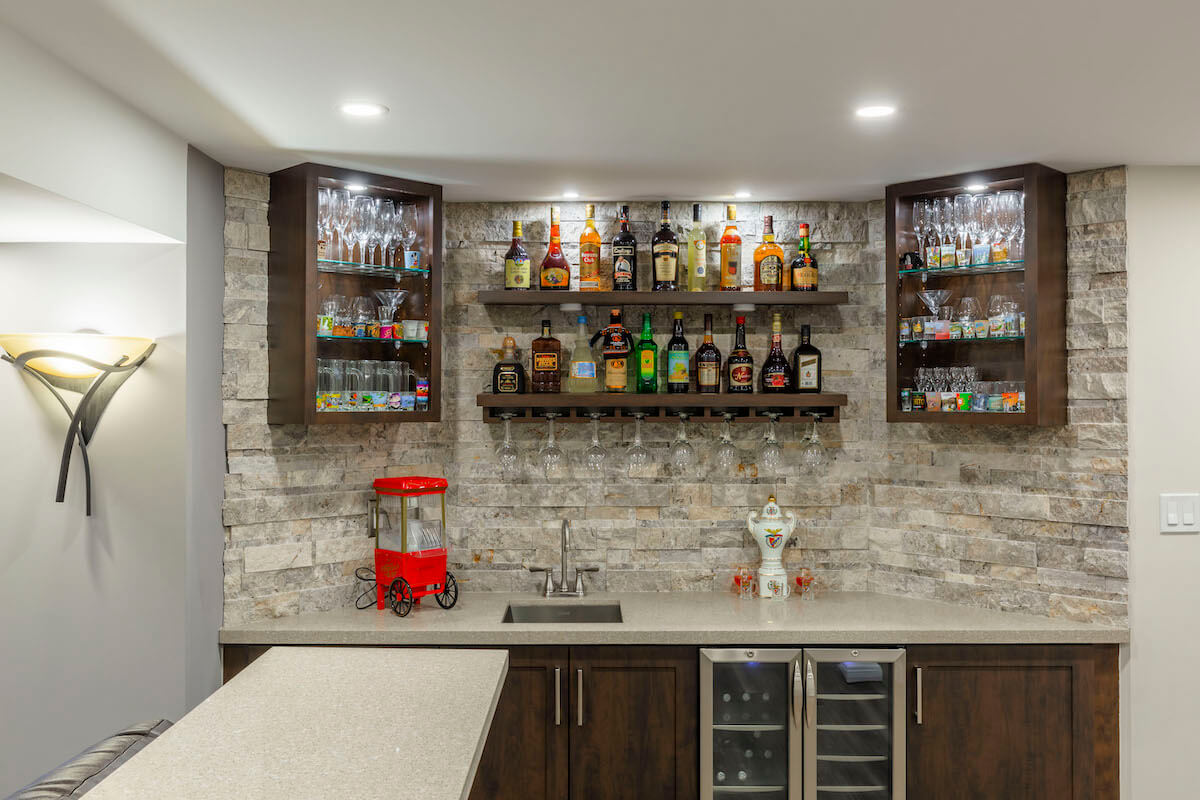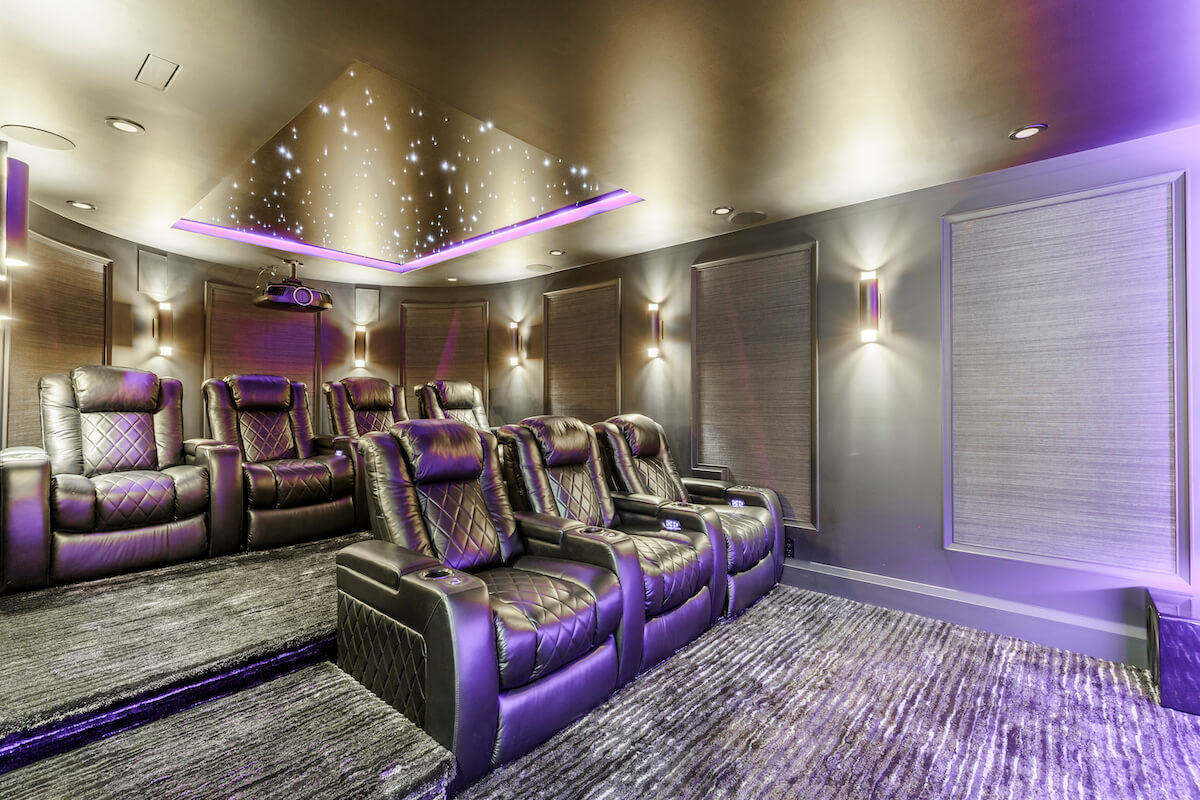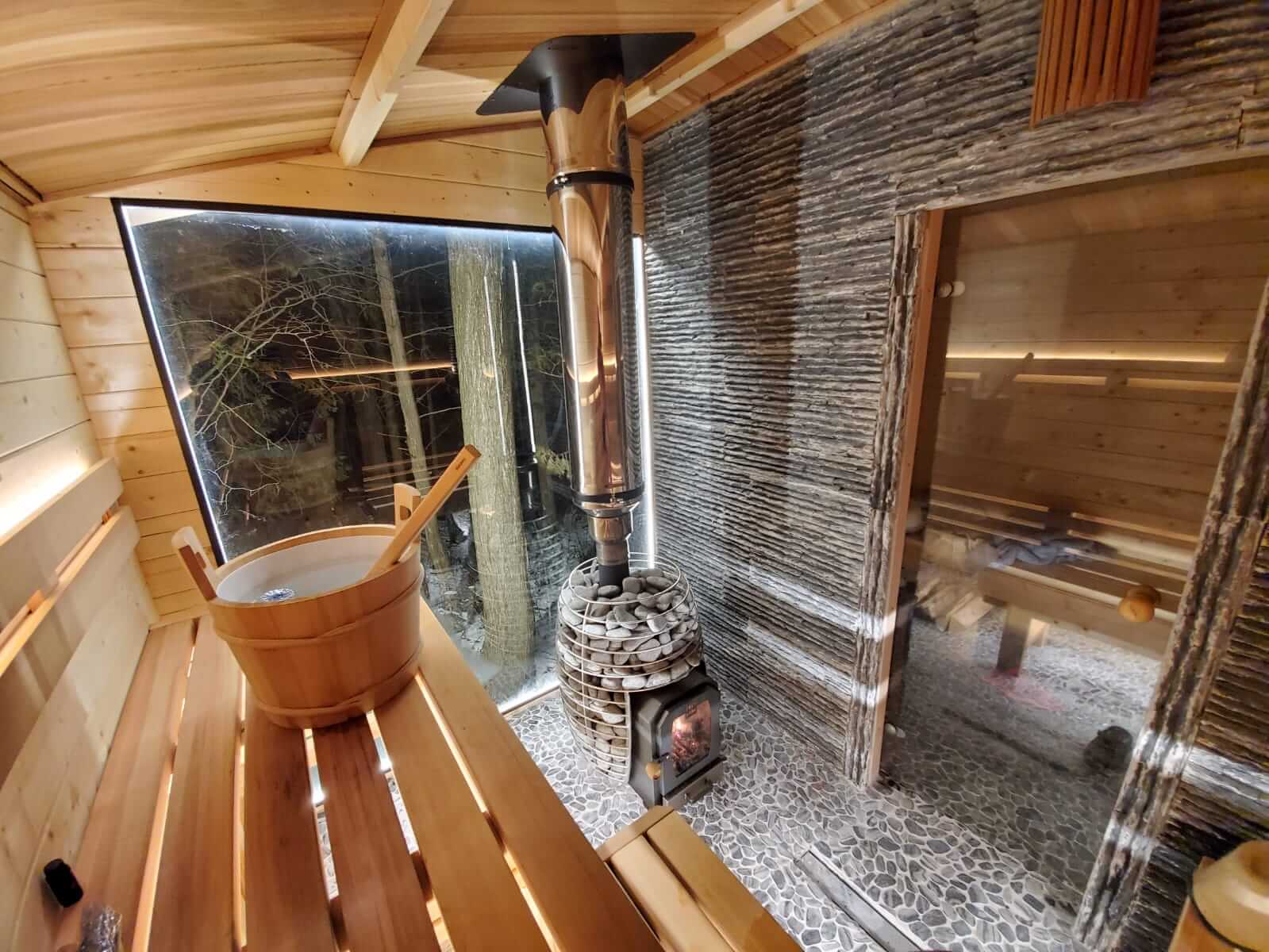
Building a sauna in the basement is a trend rapidly gaining popularity. A feature that used to be mostly for the upper class is now becoming a common household item for families from all socioeconomic backgrounds.
Not only is a basement sauna a great place to rest and relax after a hard day’s work, but health experts believe it also has many health benefits. Health professionals outline that saunas improve blood circulation, detoxify the body, relieve muscle tension and help treat certain diseases and medical condition such as cardiovascular disease, high blood pressure, arthritis and fibromyalgia.
As beautiful and functional as basement saunas are, they can also cause serious problems inside the home if not built properly. Saunas emit heat and moisture that can quickly damage interior walls and lead to mould growth. Therefore, when installing a sauna in your renovated basement, you need to use water-resistant materials, properly seal the structure, and install a good ventilation system.
And of course you can choose something else and make an office in your basement for example
HOW TO BUILD A SAUNA IN YOUR BASEMENT
The popularity of building a custom sauna in your basement is growing. A feature previously available only to the wealthy is quickly becoming a must-have for people from all walks of life.
A basement is a great place to install a sauna because the extra space provides an opportunity to add features to your home that wouldn’t normally fit into the main floor’s layout.
The cost of renovations for a custom sauna in your basement depends on the type and size of the unit. While it will be cheaper to build on your own if you don’t know how to install a sauna in your basement, hiring a professional will save you money and time in the long run.
PICK THE RIGHT LOCATION
The first step in adding a perfect sauna to your basement is to choose the right location. Consider where the sauna will get the most useful and make sure there is enough space to accommodate the type of sauna you want comfortably.
It would help if you also considered how the placement of the sauna would affect the rest of your basement. For example, if you plan on having a wet sauna, you need to know how the extra moisture will affect any electronics or unfinished surfaces nearby.
MEASURE THE AREA
Once you’ve chosen the perfect location for your sauna, it’s time to start measuring the area. You need to make sure you have enough space to comfortably accommodate the sauna you want and any additional features you plan on adding.
TYPE OF SAUNA HEAT
One of the most important decisions you need to make when building a sauna in your basement is what type of heat you want to use. There are two main types of saunas: dry sauna and wet sauna.
Dry saunas use dry heat, typically from infrared heaters or electric sauna heaters. On the other hand, wet saunas use a steam generator to create a humid environment for steam saunas.
While dry saunas are considered traditional saunas and a more common type, meanwhile wet saunas have become increasingly popular in recent years because of their health benefits.
BUILD AND INSULATE THE FRAME
Once you’ve decided on the location and type of heat for your sauna, it’s time to start construction. The first step is to build and insulate the frame.
This is critical because the frame needs to be strong enough to support the weight of the sauna and its occupants. It also needs to be properly insulated to prevent heat from escaping.
FLOORING CHOICE IS IMPORTANT
The type of flooring you choose for your sauna is also important. It needs to be durable and able to withstand high temperatures and moisture.
Some of the most popular options include ceramic tile, stone, cedar boards and concrete.
WATERPROOF FLOORS
Another important consideration when choosing to floor for your sauna is waterproofing. This is critical because the sauna will produce a lot of heat and moisture, which can quickly damage unprotected floors.
DOOR INSTALLATION
Once the frame is built, and the flooring is in place, it’s time to install the door. This is critical because the door needs to be sturdy and withstand high temperatures and moisture.
It’s also important to ensure the door is properly sealed to prevent heat from escaping.
PLUMBING AND ELECTRICAL LINES
The last step in building your basement sauna is to install the plumbing and electrical lines. This is critical because the sauna will produce a lot of heat and moisture, which can quickly damage unprotected electrical components. It would help to make sure the plumbing is properly installed to prevent leaks.
Hiring a professional to help you install your basement sauna is the best way to ensure it’s done correctly. While it will cost more upfront, it will save you money and time in the long run.
